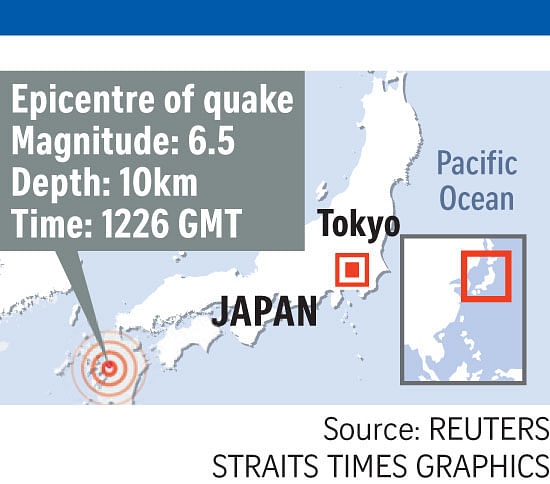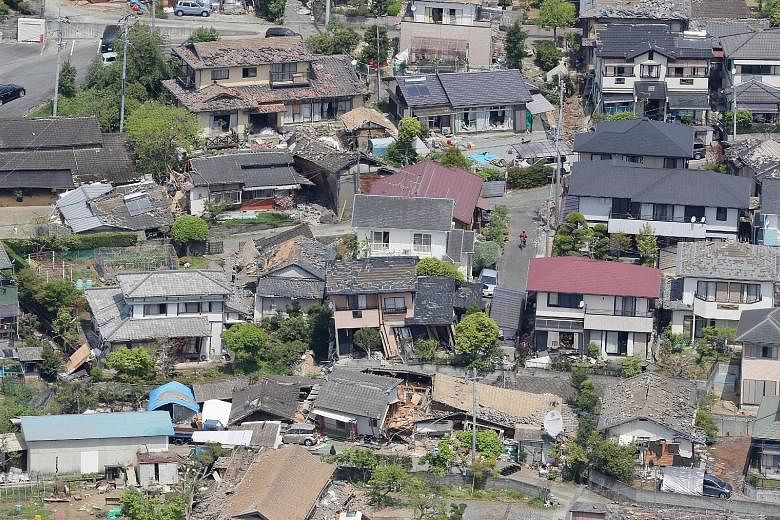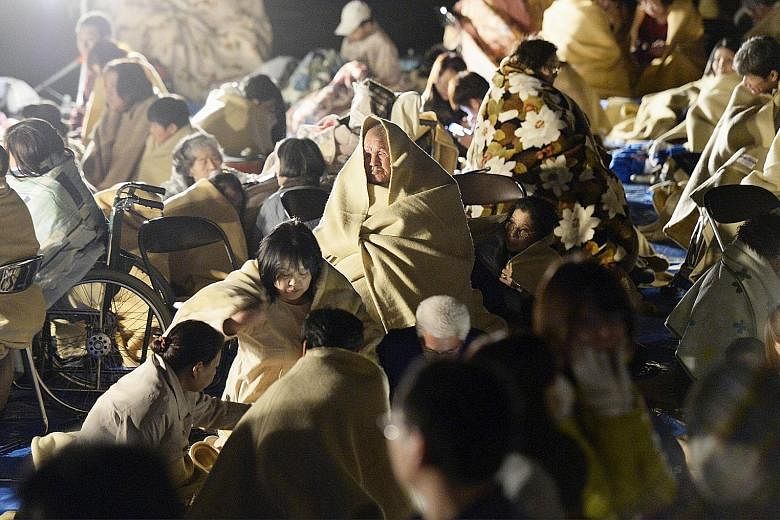MASHIKI (Japan) • Aftershocks rattled south-western Japan after a strong quake killed nine people, injured nearly 900 and cut power and water across the region, forcing the temporary shutdown of several car and electronics factories.
By yesterday afternoon, more than 130 aftershocks had hit the area around the city of Kumamoto in the wake of the initial 6.5-magnitude quake the night before.
Officials said the frequency was tapering off but the risk of further strong aftershocks will remain for about a week.
The government said it had confirmed that nine people were killed and 881 were injured, at least 52 of them seriously.
While the magnitude of Thursday's quake was much lower than that of the 9.0 March 11, 2011, quake that touched off a massive tsunami and nuclear meltdowns at Fukushima, the intensity was similar because it struck on land and at a much shallower depth of 10km.

"The house shook up and down," said Mr Nobuyuki Morita, 67, a resident of the worst-hit town of Mashiki in Kumamoto prefecture, which accounted for eight of the nine deaths. "I was really surprised," he said. adding that he was watching TV at home when the quake struck at 9.30pm. "I had never experienced such a big quake since I was born." He and his wife spent the night in their car as the roof of their house had collapsed.
More than 44,000 people initially fled to schools and community centres. Shaken residents queued for water in rubble-strewn streets yesterday, with many facing a second night of uncertainty away from their ruined homes.
Roads cracked, houses crumbled, and tiles cascaded from the roof of the 400-year-old Kumamoto Castle in the centre of the city.
Among those pulled from the wreckage was an eight-month-old baby girl, wrapped in a blanket and passed hand to hand by firefighters. Several hospitals had to evacuate patients.
Japanese stocks ended down 0.4 per cent, with the impact of the quake limited primarily to regional shares that could experience some direct impact.
Nuclear plants in the region were unaffected, but several major manufacturers, including Honda and Sony, said they had suspended operations at factories in the area.
More than 3,000 troops, police and firemen were dispatched to the area from around Japan, and Prime Minister Shinzo Abe said more would be sent if needed. "We will do everything in our power to ensure the safety of local residents," he told a parliamentary committee.
Most of the dead came from Mashiki, a town of around 34,000 people near the epicentre of the quake, where firefighters battled a blaze late on Thursday.
Daylight showed splintered houses under tiled roofs and a building whose ground floor was pulverised, where two people died.
"I want to go home, but we couldn't do anything there," one boy at an evacuation centre told TBS television as he bounced a baby in his arms.
Service on the Shinkansen superfast train in Kyushu was halted after one train derailed - luckily while it was empty - said Mr Yusuke Nanri, a spokesman for operator JR Kyushu. Highways were closed after some sections collapsed.
Singapore's Ministry of Foreign Affairs yesterday said the Singapore Embassy in Tokyo had contacted most of the registered Singaporeans in the affected areas and verified with the Japanese authorities that no Singaporeans were affected by the earthquake thus far.
Singaporeans in the affected areas who require consular assistance may contact the Singapore Embassy in Tokyo on (+81)-90-3208 4122 or the 24-hour MFA Duty Office on 6379-8800/8855.


